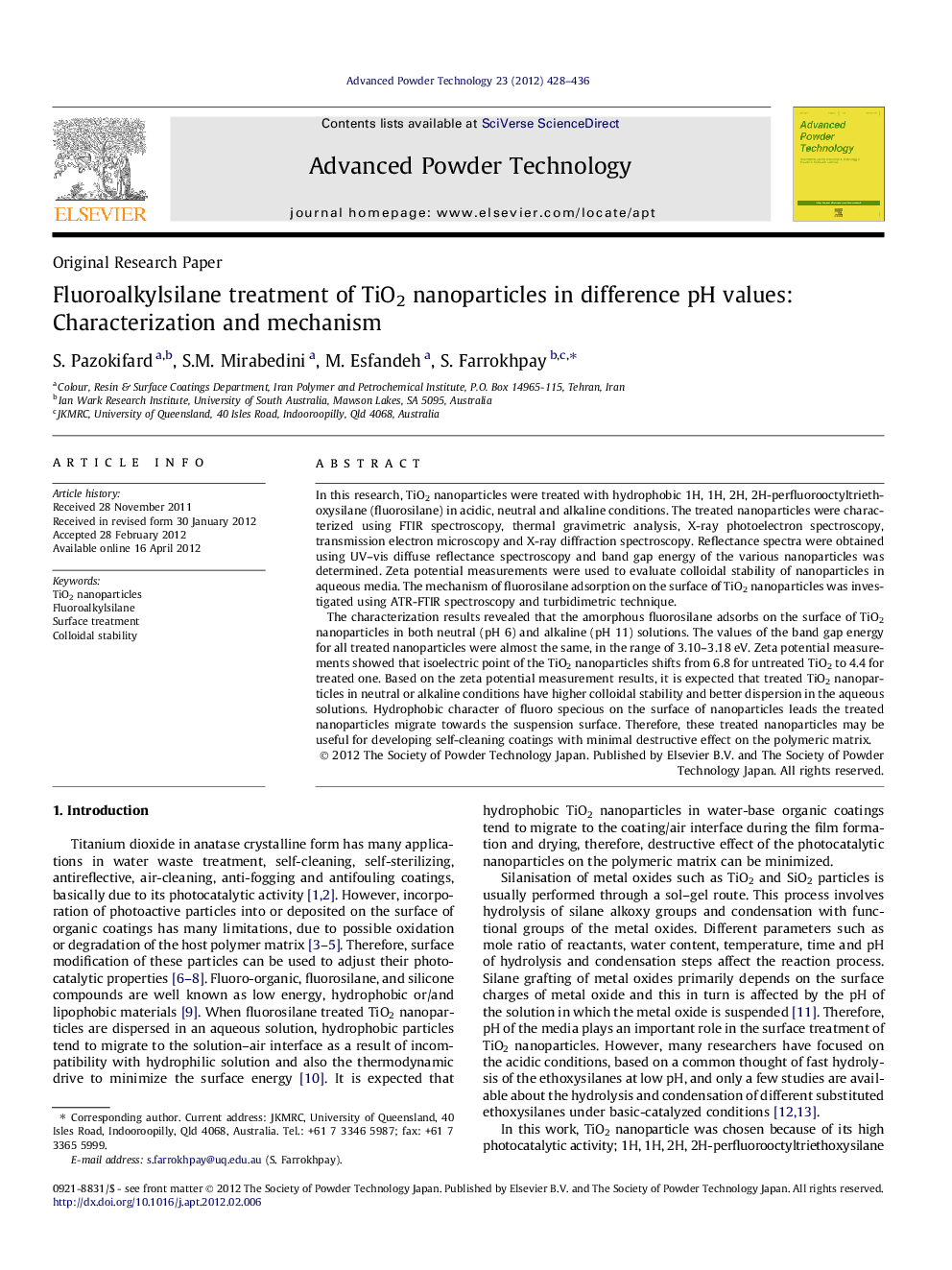| Article ID | Journal | Published Year | Pages | File Type |
|---|---|---|---|---|
| 144419 | Advanced Powder Technology | 2012 | 9 Pages |
In this research, TiO2 nanoparticles were treated with hydrophobic 1H, 1H, 2H, 2H-perfluorooctyltriethoxysilane (fluorosilane) in acidic, neutral and alkaline conditions. The treated nanoparticles were characterized using FTIR spectroscopy, thermal gravimetric analysis, X-ray photoelectron spectroscopy, transmission electron microscopy and X-ray diffraction spectroscopy. Reflectance spectra were obtained using UV–vis diffuse reflectance spectroscopy and band gap energy of the various nanoparticles was determined. Zeta potential measurements were used to evaluate colloidal stability of nanoparticles in aqueous media. The mechanism of fluorosilane adsorption on the surface of TiO2 nanoparticles was investigated using ATR-FTIR spectroscopy and turbidimetric technique.The characterization results revealed that the amorphous fluorosilane adsorbs on the surface of TiO2 nanoparticles in both neutral (pH 6) and alkaline (pH 11) solutions. The values of the band gap energy for all treated nanoparticles were almost the same, in the range of 3.10–3.18 eV. Zeta potential measurements showed that isoelectric point of the TiO2 nanoparticles shifts from 6.8 for untreated TiO2 to 4.4 for treated one. Based on the zeta potential measurement results, it is expected that treated TiO2 nanoparticles in neutral or alkaline conditions have higher colloidal stability and better dispersion in the aqueous solutions. Hydrophobic character of fluoro specious on the surface of nanoparticles leads the treated nanoparticles migrate towards the suspension surface. Therefore, these treated nanoparticles may be useful for developing self-cleaning coatings with minimal destructive effect on the polymeric matrix.
Graphical abstractFigure optionsDownload full-size imageDownload as PowerPoint slideHighlights► TiO2 nanoparticles were treated with fluorosilane in various pH values. ► Characterization results confirmed successfully surface treatment in pH 6 and pH 11. ► Fluorosilane adsorption on TiO2 nanoparticles was physically rather than chemically. ► Band gap energy and crystallinity of untreated and treated TiO2 were almost similar. ► Hydrophobicity of treated TiO2 caused migration towards the suspension surface.
